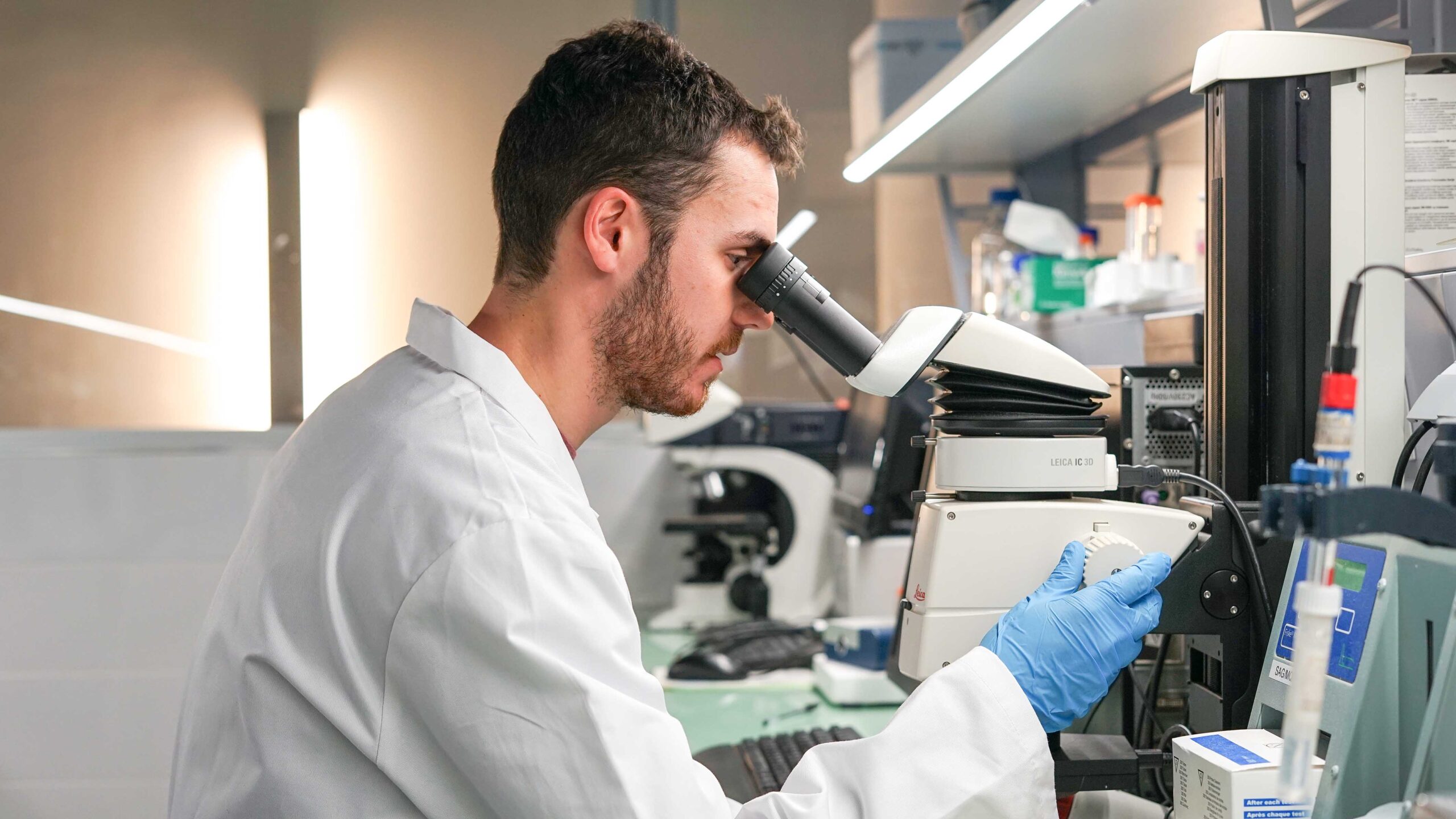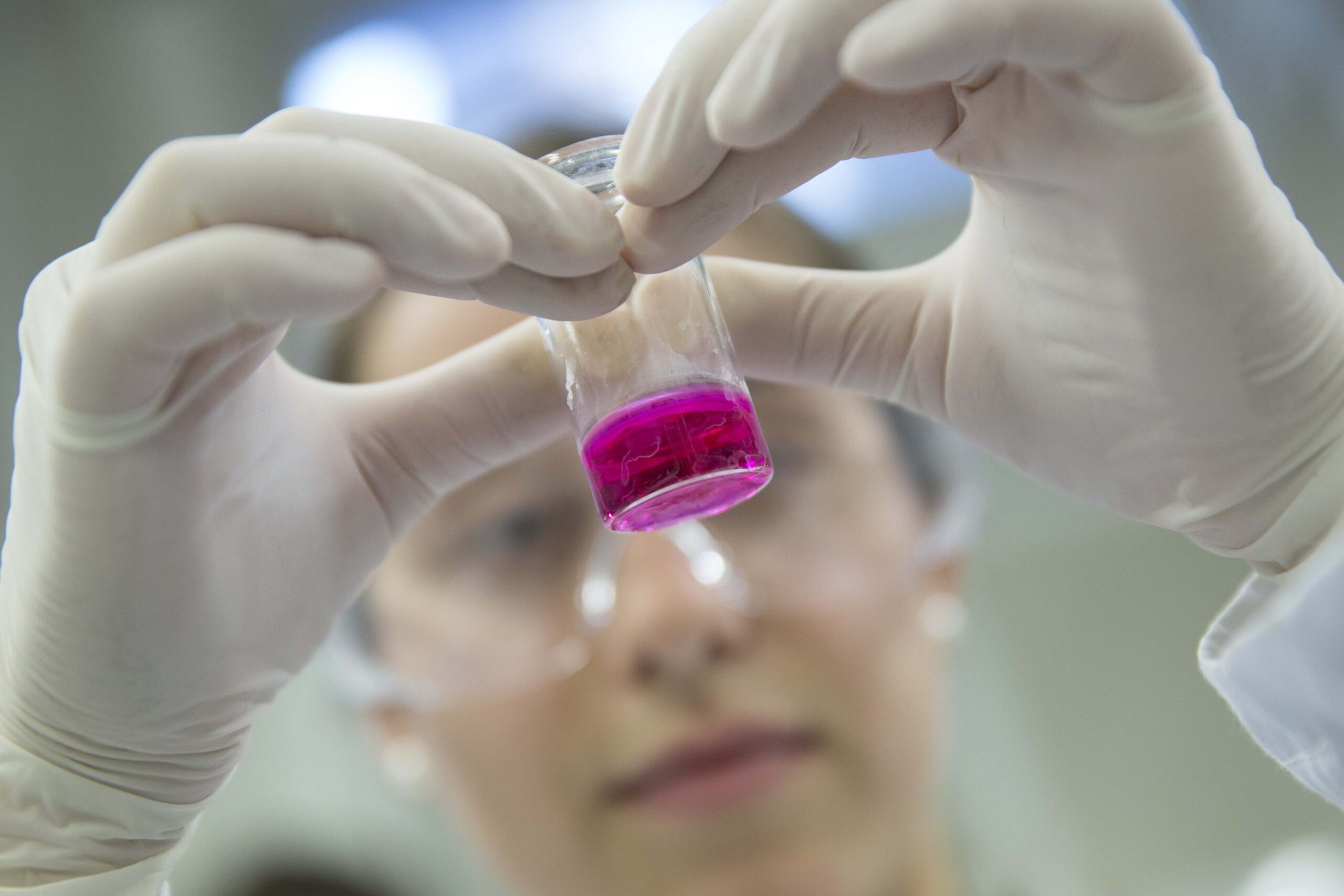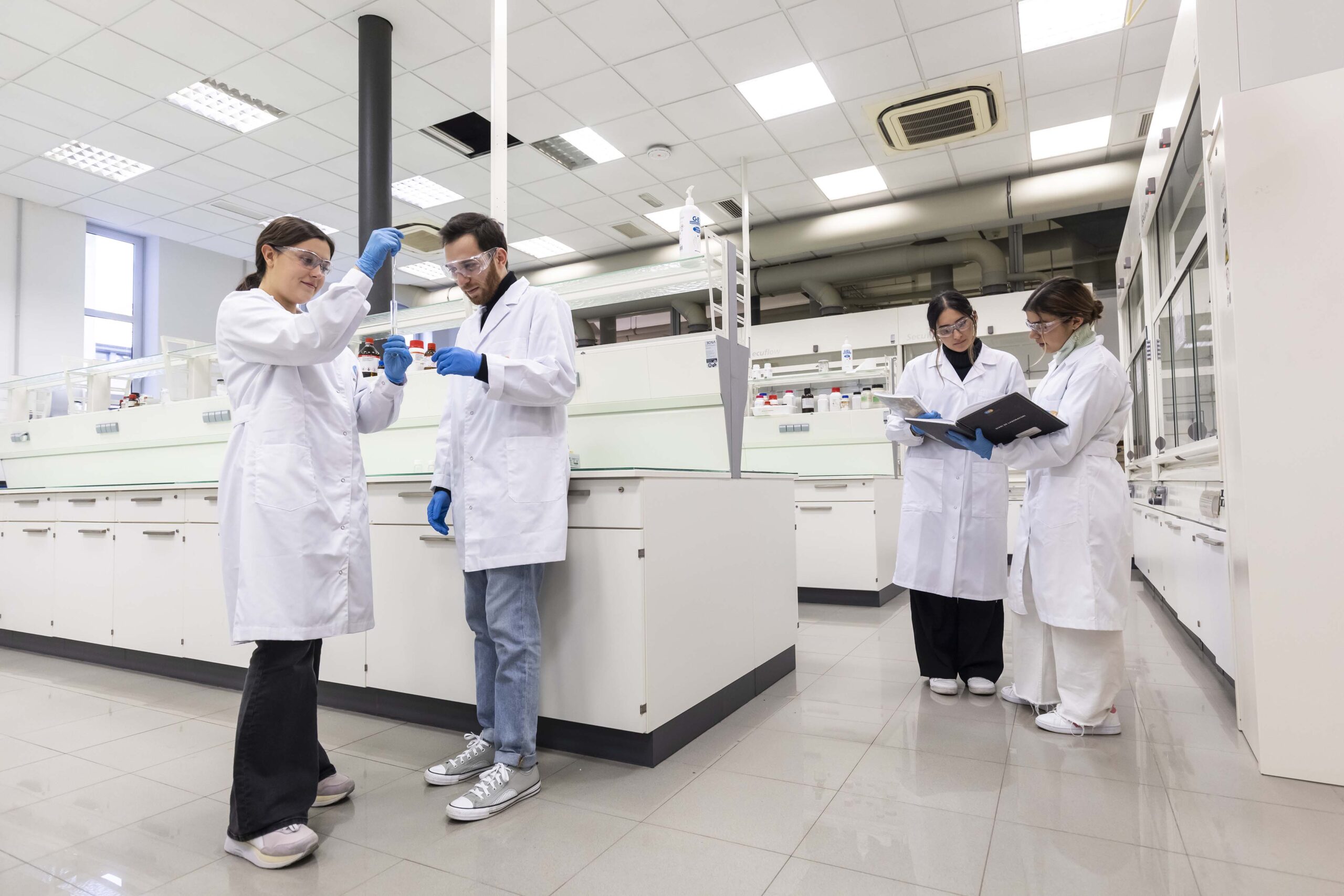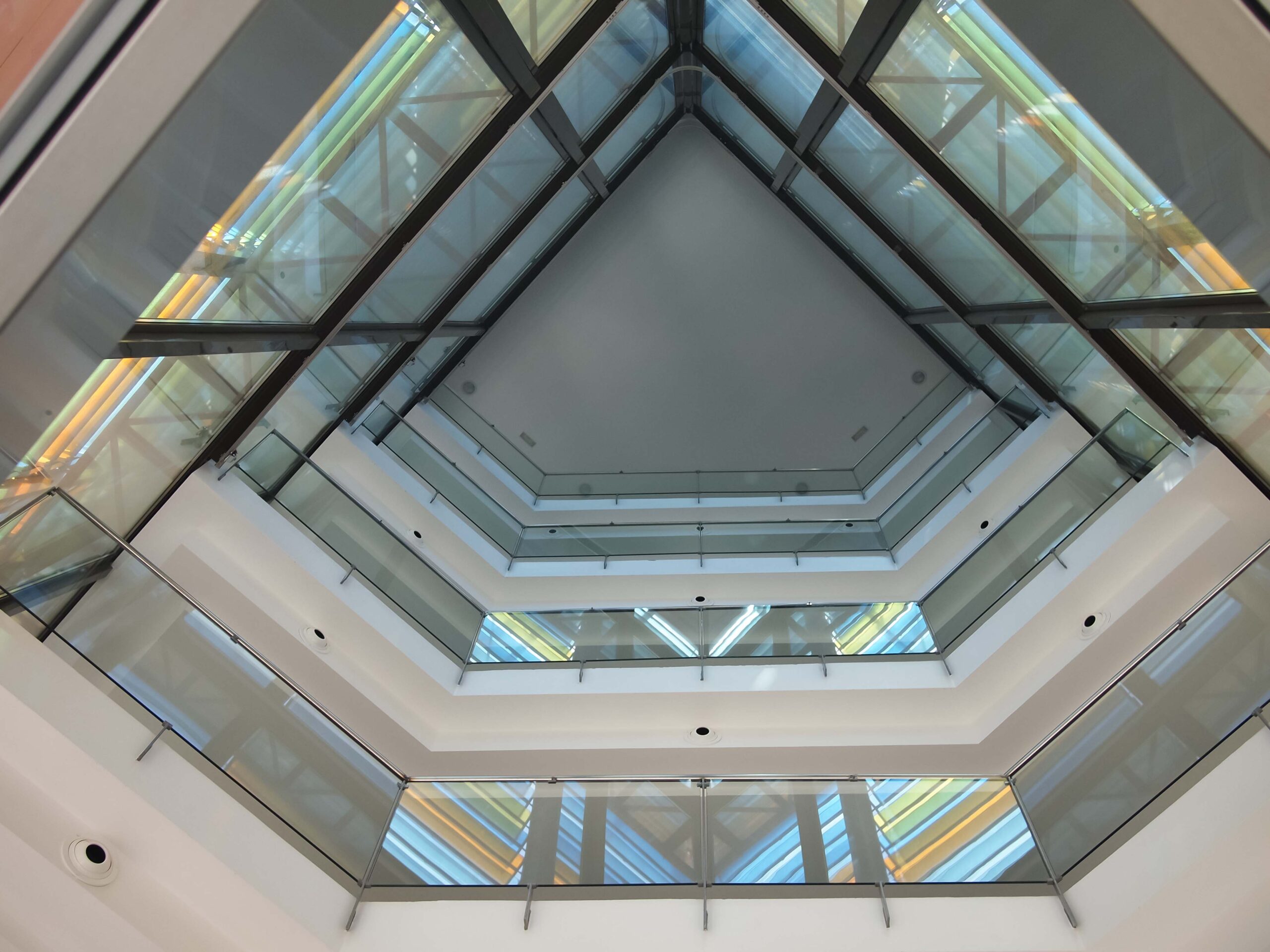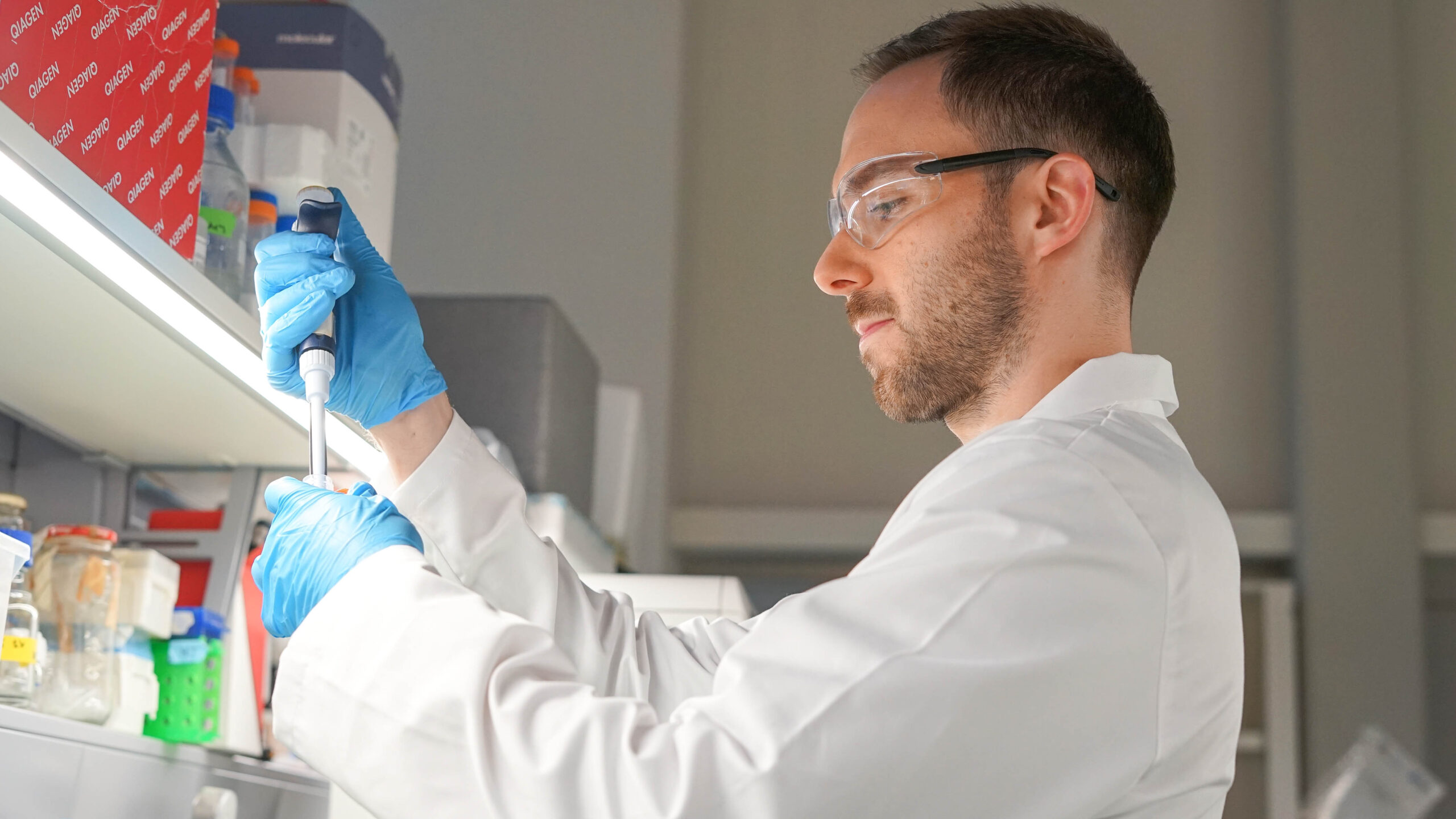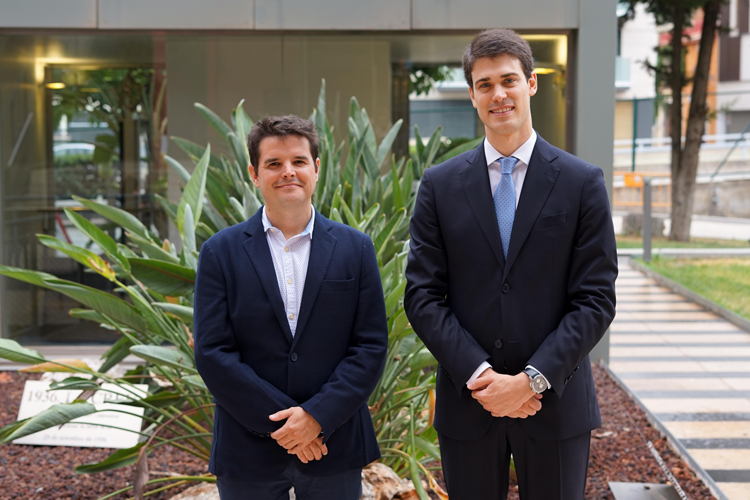Dr Albert Forés Garriga recently defended his doctoral thesis at IQS, in which he explored the design and manufacture of cellular solids and their implementation as lightweight cores for sandwich structures using additive manufacturing by molten filament.

Dr Marco A. Pérez and Dr Albert Forés Garriga
Faced with the threat posed by climate change and the clear problems caused by a lack of resources, engineers and scientists around the world are working to provide more efficient and environmentally friendly solutions. In industrial activities that are responsible for significant levels of pollution such as the transport sector, many of the challenges involve optimizing the structures used to achieve the desired components and make more efficient and sustainable use of raw materials.
Hybrid configurations such as sandwich structures are highly competitive solutions that have been adopted and consolidated in recent years in many industrial sectors, from construction to transport. These composite materials are made up of two “stiff skins” and a lightweight core. Choosing the right configuration is crucial to achieve the desired performance, and the material and morphology of the core in particular play a fundamental role in the final properties of the structure.
The emergence of Additive Manufacturing (AM) technologies has revolutionized many industrial sectors, directly impacting manufacturing processes and component design, thanks to its versatility and flexibility in manufacturing components with great geometric complexity. Within this context, Dr Albert Forés Garriga recently defended his doctoral thesis at IQS, entitled “Design and additive manufacturing of cellular solids for lightweight hybrid sandwich structures,” conducted in the Department of Industrial Engineering – Applied Mechanics and Advanced Manufacturing (GAM) Group at the IQS School of Engineering, under the supervision of Dr Marco Antonio Pérez.
Lightweight cores made with AM
In nature we can find an infinity of structural morphologies such as turtle shells, honeycombs, bird feathers, or the interiors of human bones that have evolved over a vast time to achieve a very high degree of optimization. Known in the engineering field as cellular solids, they are all characterized by being formed through a network of interconnected bars or walls, leaving empty space of more than 70% between the cells that form them. These highly complex geometries make it possible to significantly reduce weight in an intelligent manner while maintaining their outstanding structural capacity. 
Despite this, the design and construction of structures as complex as cellular solids has been held back for years by the capabilities of common manufacturing methods. However, the emergence of additive manufacturing (AM) technologies over the past decade has opened the doors to studying the materialization of these geometries.
Therefore, the general objective of Dr Forés's thesis was to contribute to the design and Additive Manufacturing of more efficient hybrid sandwich structures using lightweight cell cores constructed by Fused Filament Fabrication (FFF), one of the most widespread AM methods. The material he selected for this research was Ultem™ 9085, a high-performance technical polythermide that offers an excellent strength-to-weight ratio and is Flame Smoke and Toxicity (FST) certified, which is essential for use in the aeronautical sector.
His research addressed three different stages of investigation. First, Dr Forés analysed the behaviour of the material to understand how the different manufacturing parameters offered by the FFF process would modify its mechanical properties, performing stress, flexion, and shear tests accompanied by the non-contact extensometry technique of Digital Image Correlation (DIC).
Despite the potential of AM technologies to reproduce complex geometries, the fabrication of lattice and lightweight structures, such as what is present in this research, still poses a challenge to the current maturity of the technique. Thus, the second stage of this thesis focused on studying the design and manufacture of bio-inspired cellular solids, as well as the analysis of their mechanical behaviour.
Finally, the designs with the most interesting properties were implemented as lightweight cell cores in hybrid sandwich structures. To do this, UltemTM 9085 bioinspired cores were combined with Carbon Fiber Reinforced Polymer (CFRP) skins and their flexural behaviour was analysed.
All the results obtained in this research were verified with the combination of three different methods: analytical, using mathematical equations; numerical, by developing simulation tools; and experimental, based on tests and comparisons with other materials.
Although there are still other areas to investigate, Dr Forés Garriga's thesis has highlighted the potential of FFF Additive Manufacturing technology to develop more efficient and sustainable advanced structures, thus making better use of available resources.
Related publications
Albert Forés, MA Perez, Giovanni Gomez, Guillermo Reyes, Role of infill parameters on the mechanical performance and weight reduction of PEI Ultem processed by FFF, Materials and Design, 193, 2020, 108810
Albert Forés-Garriga, Marco A. Perez, Giovanni Gomez-Gras, Mechanical performance of additively manufactured lightweight cellular solids: Influence of cell pattern and relative density on the printing time and compression behaviour, Materials & Design, 215 (2022), 110474.
Albert Forés, MA Perez, Giovanni Gomez, Additively manufactured three-dimensional lightweight cellular solids: Experimental and numerical analysis, Materials and design, 226 (2023), 111641.
Albert Forés-Garriga, Giovanni Gomez-Gras, MA Perez, Lightweight hybrid composite sandwich structures with additively manufactured cellular cores, Thin-Walled Structures, 101 (2023), 111082
This research has received funding within the TRANSPORT project of the RIS3CAT_Llavor 3D programme under the Government of Catalonia, the Catalonia Trade and Investment Agency (ACCIÓ), and the 3DPC project funded by the MCIN/AEI/UE Ministry.
